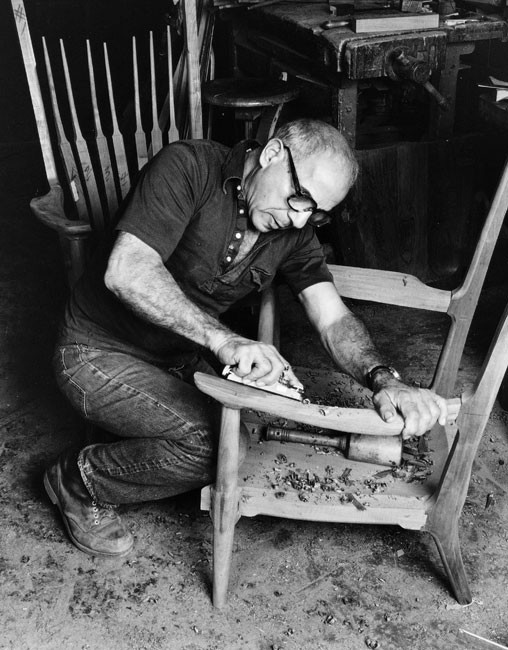
Sam Maloof working in his shop, 1978. (Photo, Jonathan Pollock.)
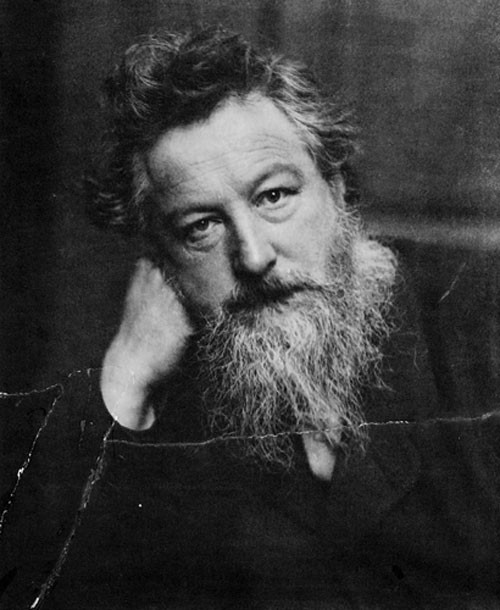
F. Hollyer, Portrait of William Morris, 1887. Photograph. (Courtesy, Huntington Library, Art Collections, and Botanical Gardens.)
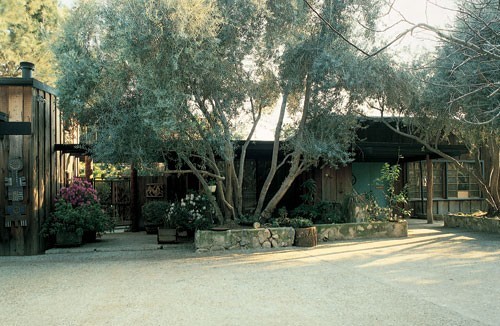
Exterior view of the Sam Maloof home and studio, Alta Loma, California. (Photo, Jonathan Pollock.)

Exterior view of the Wharton Esherick home and studio, Paoli, Pennsylvania. (Courtesy, Wharton Esherick Museum.)
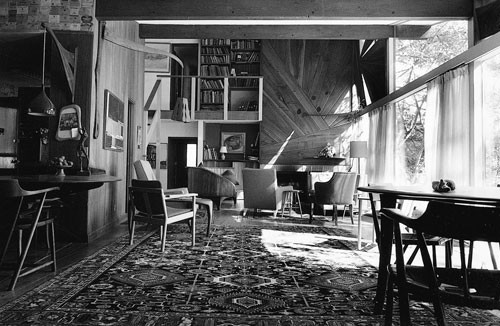
Living room interior of the home owned by Lawrence and Alice Seiver, Villanova, Pennsylvania. (Courtesy, Wharton Esherick Museum.) Esherick provided much of the paneling, built-in furniture, lighting, and movable furniture in the 1950s and 1960s.
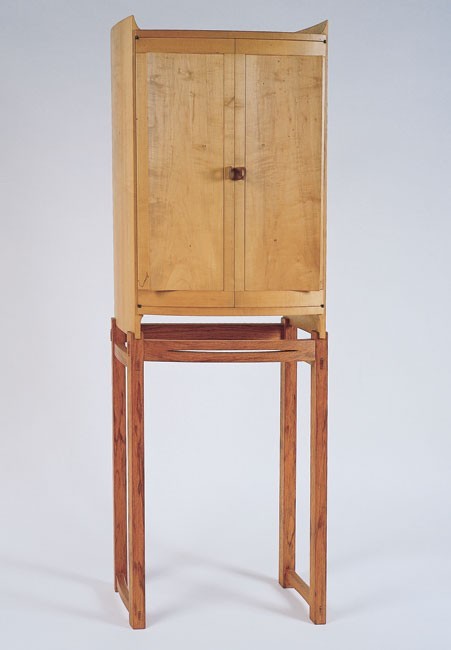
James Krenov, cabinet. Fort Bragg, California, 1982. Maple, red oak, and partridge. H. 67", W. 27", D. 11". (Courtesy, Pritam & Eames.)
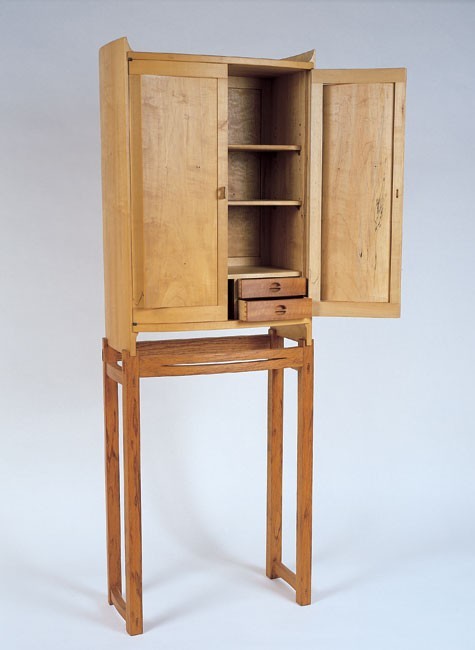
View of the cabinet illustrated in fig. 6 with the door open.
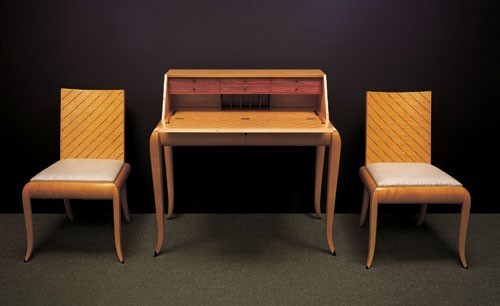
Wendell Castle, lady’s desk with two chairs, Scottsville, New York, 1981. Curly English sycamore, purpleheart, ebony, delrin, and Baltic birch plywood. Desk: H. 40 3/4", W. 41 1/2", D. 22 1/4"; chair: H. 34 3/4", W. 21", D. 26". (Courtesy, Wendell Castle.)
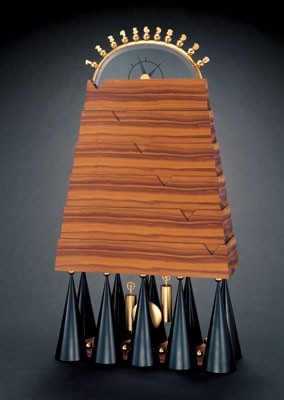
Wendell Castle, Ziggeraut, Scottsville, New York, 1985. Gabbon ebony, curly koa veneer, leather, and gold-plated brass; weightdriven movement. H. 71", W. 39", D. 15". (Courtesy, Wendell Castle.)
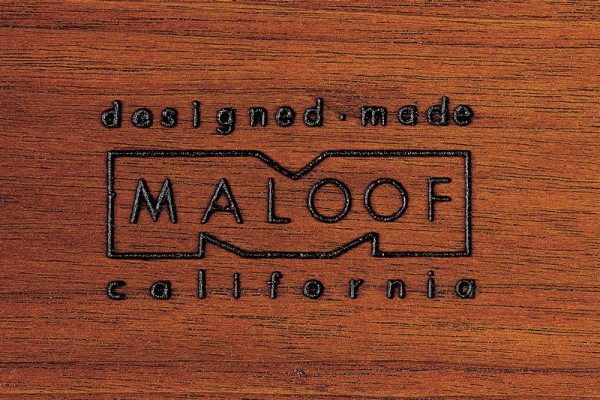
Brand used by Sam Maloof from the late 1950s to 1971. (© Smithsonian Institution; photo, Jonathan Pollock, 2001.)
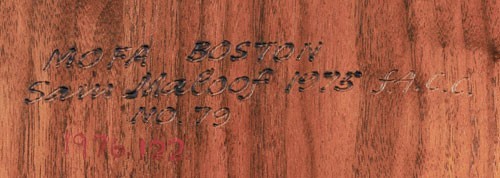
Burned signature used by Sam Maloof from 1975 to 1992. (Courtesy, Museum of Fine Arts, Boston.)
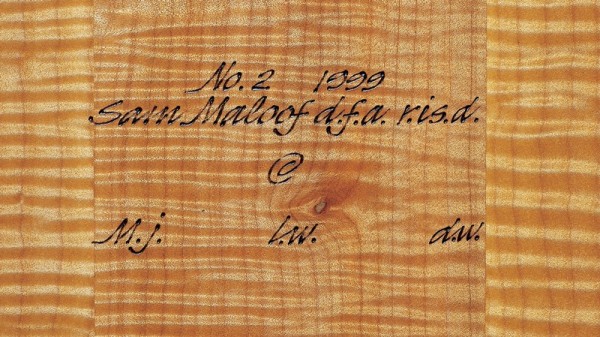
Burned signature used by Sam Maloof after 1992. (© Smithsonian Institution; photo, Jonathan Pollock, 2001.)

Carved inscription used by Wendell Castle before 1978. (Courtesy, Museum of Fine Arts, Boston.)
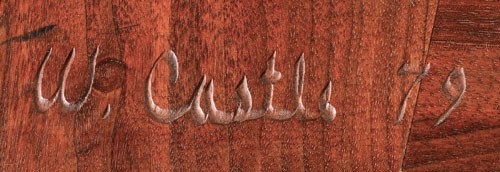
Carved inscription used by Wendell Castle from 1978 to 1984. (Courtesy, Museum of Fine Arts, Boston.)
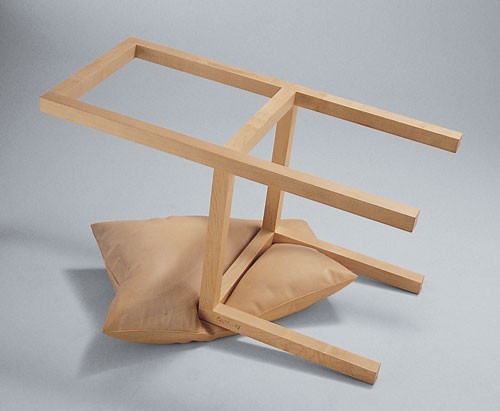
Signature used by Wendell Castle from 1984 on. (Courtesy, Pritam & Eames.) The signature is visible on the right front leg.
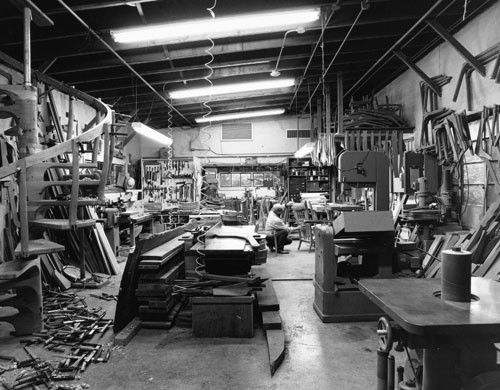
Sam Maloof workshop, 1981. (Photo, Jonathan Pollock.)
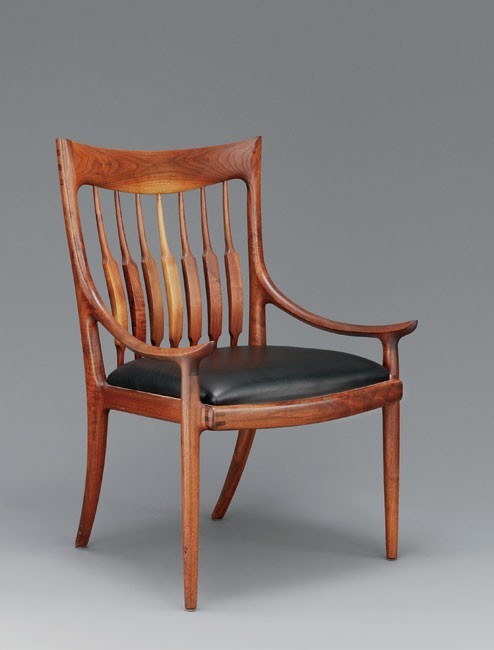
Sam Maloof, armchair, Alta Loma, California, 1975. Walnut and black vinyl. H. 38", W. 30", D. 22 1/2". (Courtesy, Museum of Fine Arts, Boston; purchased through funds provided by the National Endowment for the Arts and the Gillette Corporation.)
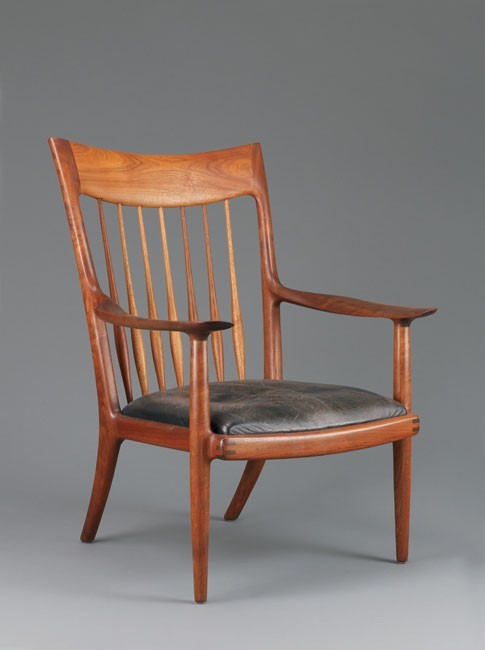
Sam Maloof, armchair, Alta Loma, California, 1975. Walnut and black vinyl. H. 38 1/2", W. 30", D. 25 3/4". (Courtesy, Museum of Fine Arts, Boston; purchased through funds provided by the National Endowment for the Arts and the Gillette Corporation.)
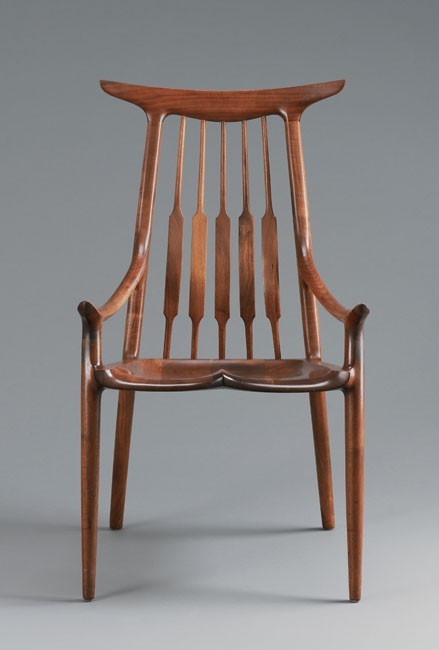
Sam Maloof, armchair, Alta Loma, California, 1975. Walnut. H. 39 3/4", W. 22", D. 23". Courtesy, Museum of Fine Arts, Boston; purchased through funds provided by the National Endowment for the Arts and the Gillette Corporation.)

Wendell Castle, Molar chair, manufactured by Northern Plastics Corporation for Beylerian Limited, 1969–1970. Glass-reinforced polyester. H. 26", W. 36", D. 30". (Courtesy, Detroit Institute of Arts.)
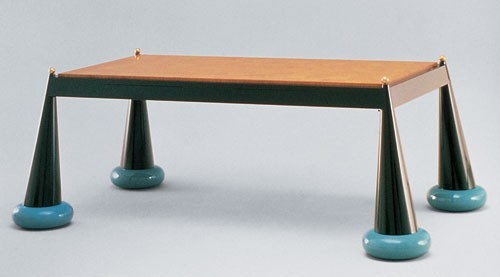
Wendell Castle, protoype for the Atlantis desk, designed for the Gunlocke Company, 1982. Ebonized and lacquered cherry, flakeboard, beeswing narra veneer, plastic inlay, and gold-plated brass. H. 29", W. 72", D. 36". (Courtesy, Wendell Castle.)
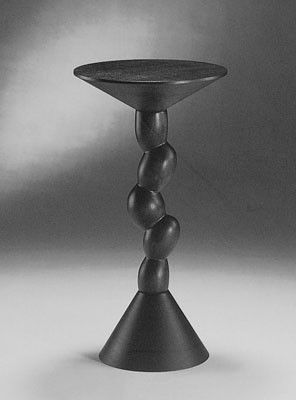
Wendell Castle, Huevos table, 1999. Mahogany. Dimensions not recorded. (Courtesy, Wendell Castle.)
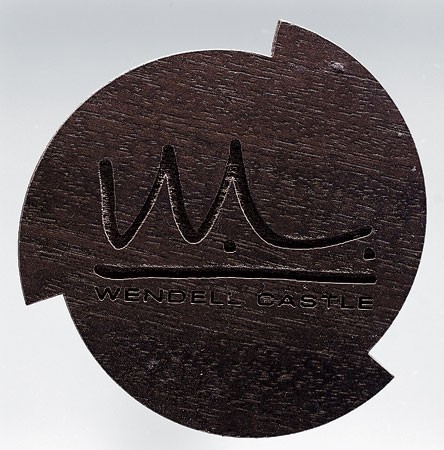
Stamp used by Wendell Castle on his designs for Icon Furniture. (Courtesy, Wendell Castle.)

Sam Maloof, settee, Alta Loma, California, 1987. Curly maple. H. 30", W. 42", D. 25". (Photograph 2003 © Metropolitan Museum of Art; gift of the artist and purchase, anonymous gift.)
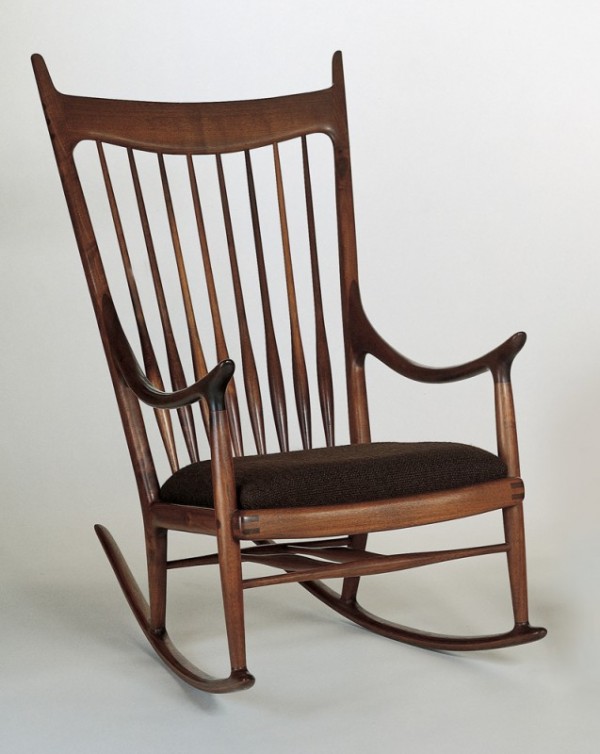
Sam Maloof, spindle-back rocking chair, Alta Loma, California, 1968. Walnut and leather. H. 44 7/8", W. 26", D. 42 1/8". (© Smithsonian Institution; photo, Jonathan Pollack, 2001.)

Sam Maloof, rocking chair, Alta Loma, California, 1975. Walnut. H. 44 1/2", W. 27 3/4", D. 46". (Courtesy, Museum of Fine Arts, Boston; purchased through funds provided by the National Endowment for the Arts and the Gillette Corporation.)
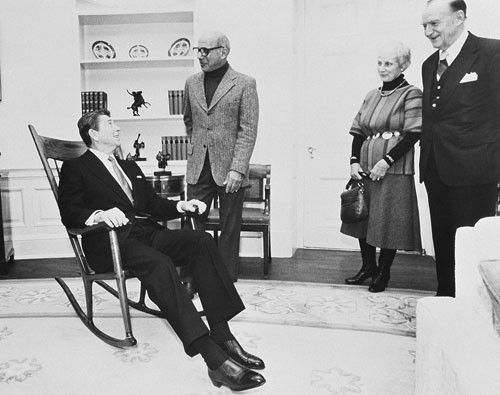
President Ronald Reagan accepting the gift of a Maloof rocking chair, November 11, 1981. (Courtesy, Sam Maloof.) Sam and Freda Maloof and Clement Conger look on.
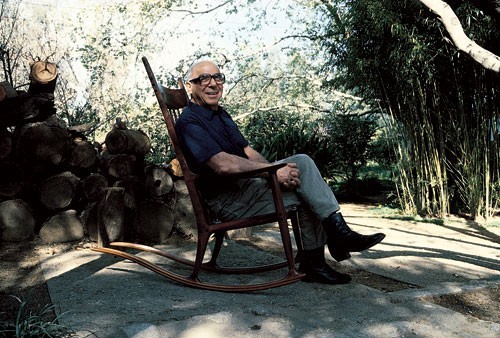
Sam Maloof sitting in one of his rocking chairs. (Photo, Rick Mastelli.)
